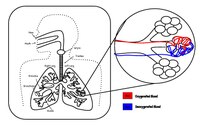
MicroRNA-365 regulates human cardiac action potential duration
Sign Up to like & getrecommendations! Published in 2022 at "Nature Communications"
DOI: 10.1038/s41467-021-27856-7
Abstract: Abnormalities of ventricular action potential cause malignant cardiac arrhythmias and sudden cardiac death. Here, we aim to identify microRNAs that regulate the human cardiac action potential and ask whether their manipulation allows for therapeutic modulation… read more here.
Keywords: cardiac action; mir 365; action; human cardiac ... See more keywords

Efficient parameterization of cardiac action potential models using a genetic algorithm.
Sign Up to like & getrecommendations! Published in 2017 at "Chaos"
DOI: 10.1063/1.5000354
Abstract: Finding appropriate values for parameters in mathematical models of cardiac cells is a challenging task. Here, we show that it is possible to obtain good parameterizations in as little as 30-40 s when as many as… read more here.
Keywords: genetic algorithm; using genetic; cardiac action; action ... See more keywords

Cl-/HCO3- Exchanger slc26a6: A pH Regulator Shapes the Cardiac Action Potential.
Sign Up to like & getrecommendations! Published in 2017 at "Circulation: Arrhythmia and Electrophysiology"
DOI: 10.1161/circep.117.005812
Abstract: See Article by Sirish et al Regulation of intracellular pH (pHi) is often considered a housekeeping function, contributing little to cardiac contractile activity. With the study published by Sirish et al1 in this issue of… read more here.
Keywords: exchanger; hco3 exchanger; hco3; slc26a6 ... See more keywords

Early afterdepolarizations in cardiac action potentials as mixed mode oscillations due to a folded node singularity
Sign Up to like & getrecommendations! Published in 2018 at "PLoS ONE"
DOI: 10.1371/journal.pone.0209498
Abstract: Early afterdepolarizations (EADs) are pathological voltage oscillations during the repolarization phase of cardiac action potentials. They are considered as potential precursors to cardiac arrhythmias and have recently gained much attention in the context of preclinical… read more here.
Keywords: mixed mode; folded node; cardiac action; early afterdepolarizations ... See more keywords

Molecular basis of the different effects of procainamide and N-acetylprocainamide on the maximum upstroke velocity and half-decay time of the cardiac action potential in guinea pig papillary muscle
Sign Up to like & getrecommendations! Published in 2023 at "Brazilian Journal of Medical and Biological Research"
DOI: 10.1590/1414-431x2023e12073
Abstract: Procainamide (PA) and its in vivo metabolite, N-acetylprocainamide (NAPA), display some pharmacological differences. Although it is agreed that PA is a class IA antiarrhythmic, it has been reported that NAPA is a pure class III… read more here.
Keywords: cardiac action; pharmacology; class; action potential ... See more keywords